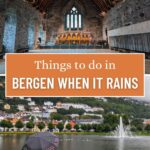So you’ve booked a trip to Bergen, Norway. You’re nervously checking the weather forecast – and it’s looking a touch damp. But all is not lost!
In this post I’ll tell you about my favourite things to do in Bergen when it rains and give you some tips for enjoying rainy days in Bergen, with indoor activities, my favourite cosy place to dry off and how to make the most of Bergen in the rain.
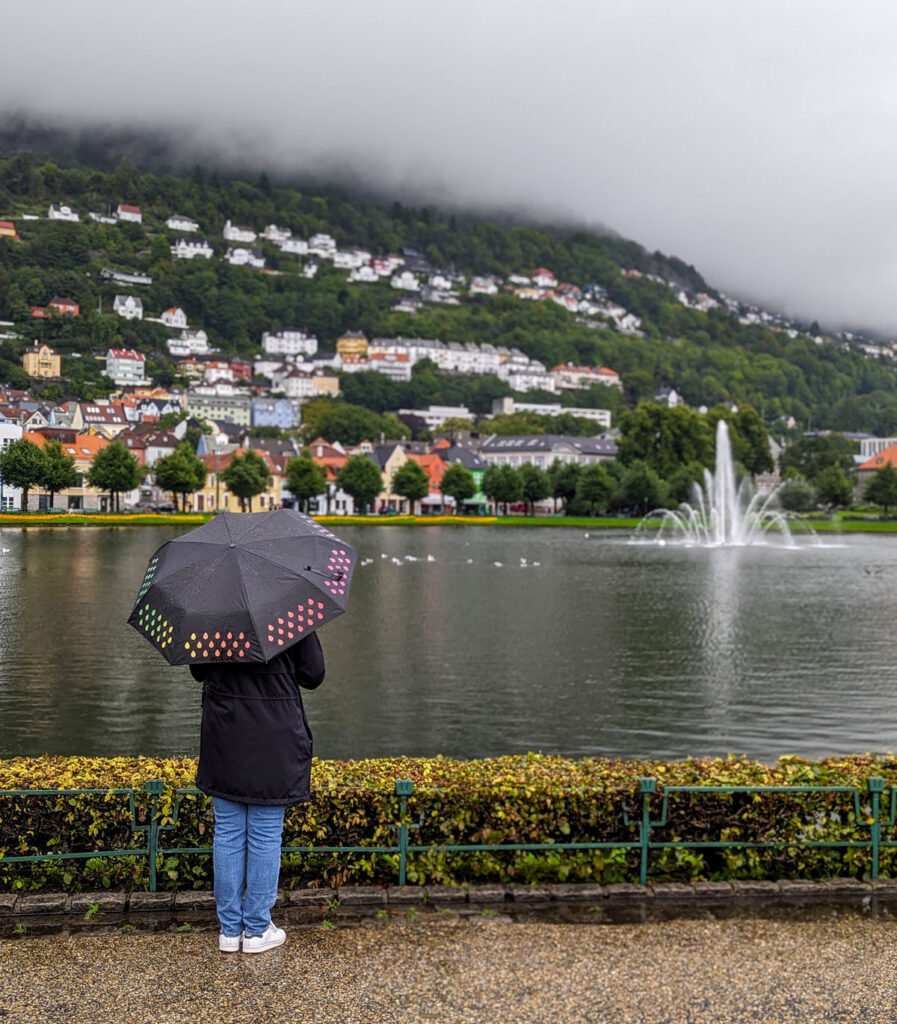
Is Bergen really as rainy as people say?
It is pretty rainy! You can expect some kind of rain on 239 days of the year, and Bergen is not only the rainiest city in Norway but one of the top 5 wettest cities in Europe.
I’ve visited Bergen twice now and it’s rained both times. On my most recent visit, we experienced some truly biblical rain on one day and lots of normal rain the rest of the time. We didn’t let it spoil our trip though!
Why does it rain so much in Bergen?
Bergen’s rainy nature is a result of a unique combination of geography and the climate in this part of Norway. Here are some reasons why Bergen receives a significant amount of rainfall:
- Maritime climate: Bergen is located along the west coast of Norway, which is dominated by a maritime climate. This type of climate is characterised by mild temperatures and relatively high humidity levels, conditions which often combine to give frequent rain.
- Wind patterns: The prevailing westerly winds coming from the North Atlantic Ocean often carry moist air. When this moist air reaches the mountains surrounding Bergen, it rises and cools, leading to condensation and – yep – more rain.
- Bergen’s mountains: Bergen is surrounded by seven mountains, which play a significant role in its rainy weather. The mountains tend to “trap” moist air, causing it to release its moisture as rain over the city.
- The Gulf Stream: The Gulf Stream, a warm ocean current in the Atlantic Ocean, brings warm, humid air to the region, contributing to its high rainfall levels.
- Seasonal variations: Bergen experiences considerable seasonal variations in weather. Autumn and winter are particularly wet due to the increased activity of Atlantic low-pressure systems during these seasons.
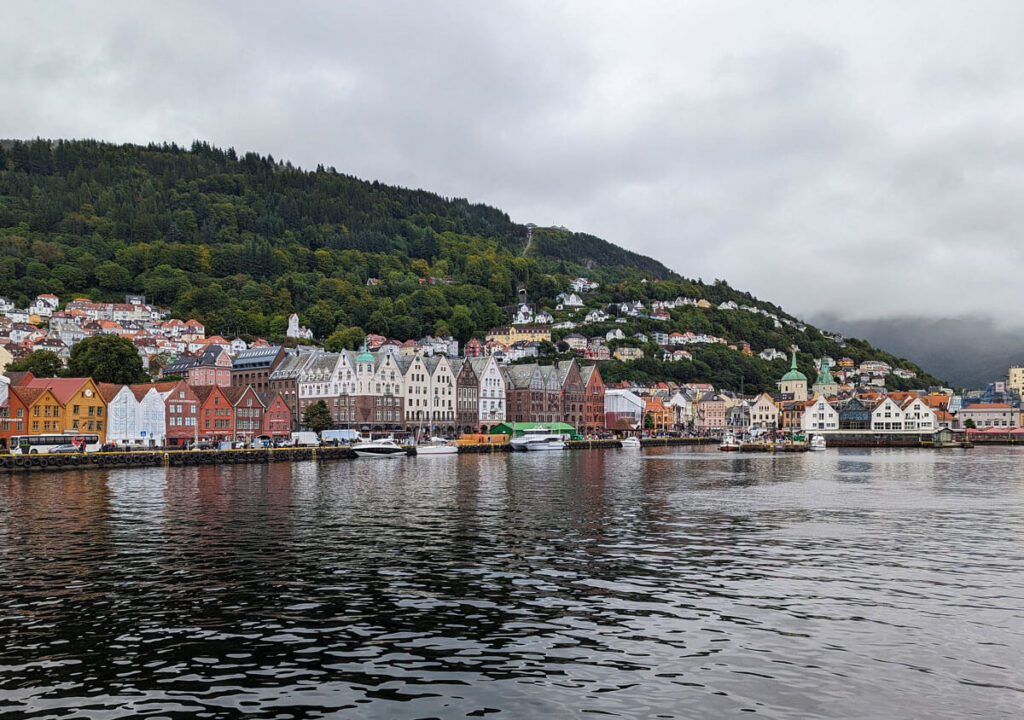
How often does it rain in Bergen?
On average, it’ll rain two out of every three days in Bergen, but it might not rain all day.
It’s worth noting that although Bergen receives a large number of rainy days, the total annual rainfall isn’t really that high compared to other rainy regions around the world. The rain is often light or drizzly, but it occurs frequently.
No matter what the weather looks like when you set out for the day, it’s a good idea to take a raincoat and umbrella along with you!
What is the rainiest month in Bergen?
September through to January are usually the wettest months in Bergen, while April, May and June tend to have the least rain. Whenever you visit, you should plan for a bit of rain and pack accordingly.
A rainy day in Bergen – what’s it really like?
The good news is that most of the rain in Bergen is drizzle, light showers or light rain. On my first trip to Bergen in June, we had a little bit of drizzle so we didn’t really need to change our plans – we just put on our waterproof jackets and carried on exploring Bergen.
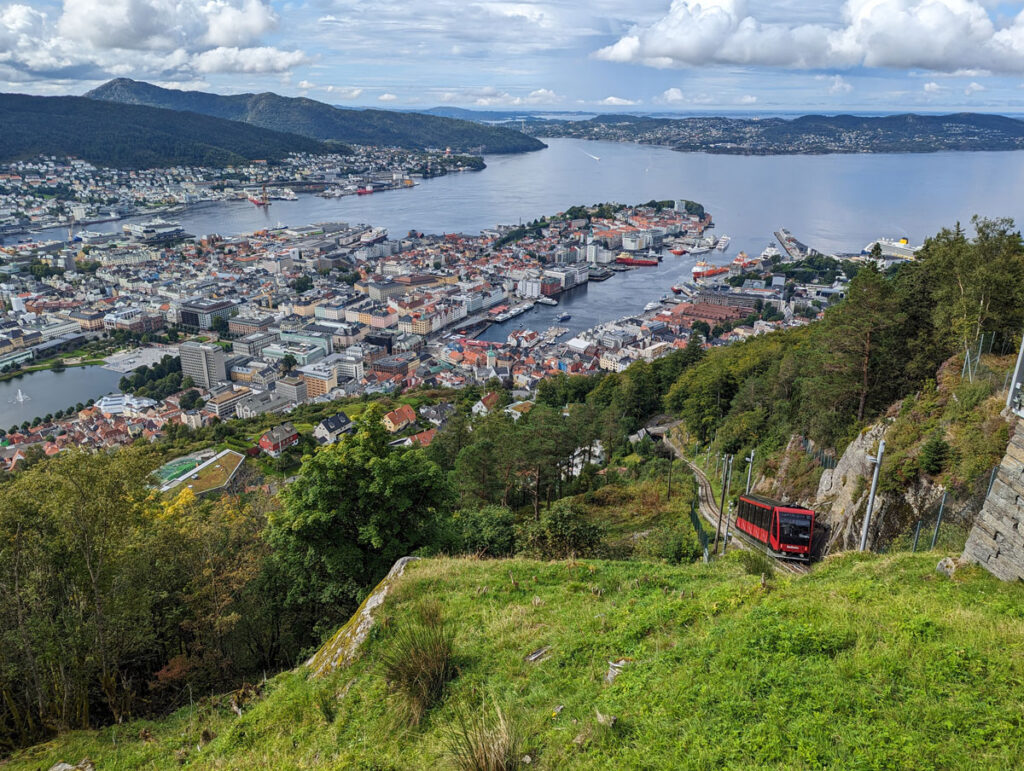
On my second trip to Bergen recently, it started raining while we were at the Skomakerdiket lake at the top of the Fløyen mountain. It was a very bright and sunny day so we hoped it would stop soon, and it did seem to be drying up as we set off down the Tippetue mountain path back to the city centre.
Unfortunately, the brightness soon disappeared and the rain kept falling, heavier and heavier. By the time we reached the Skansen Bataljon, water was flowing down the path like a river, and we were thoroughly soaked.
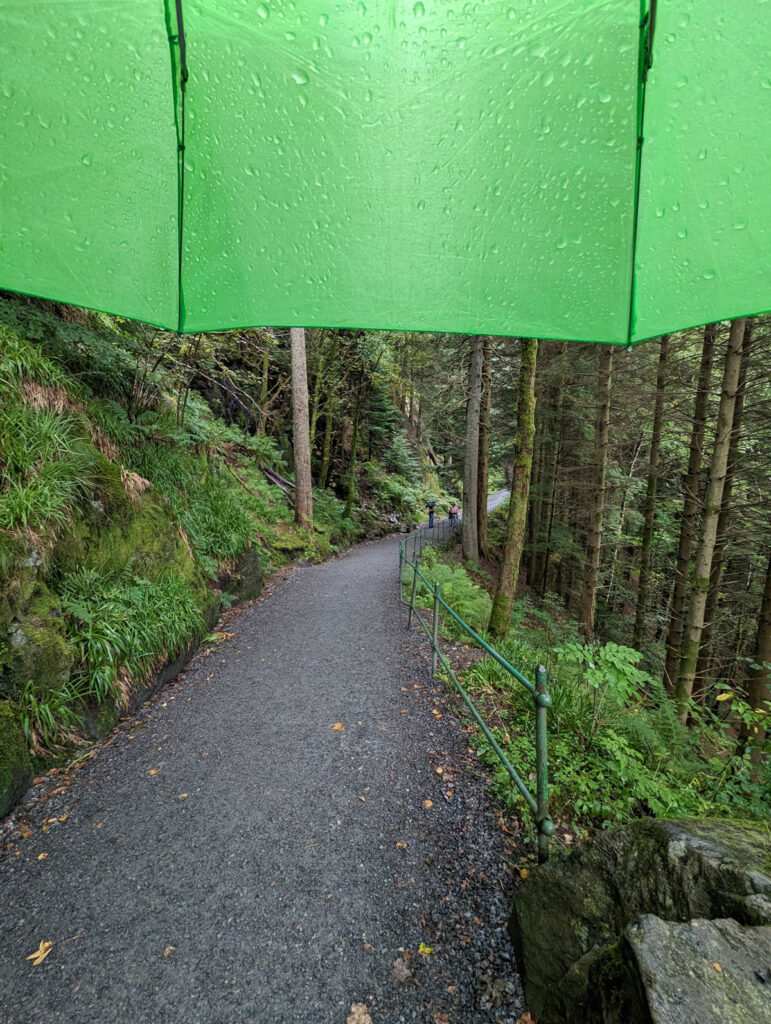
Luckily, we were staying at the Thon Hotel Rosenkrantz which is very near the bottom of the path at the lower Fløibanen station, so it wasn’t far to go to be able to dry off. We spent the rest of the afternoon trying to dry our shoes with the hotel hairdryer – not the most fun I’ve had in Bergen!
The rain broke late that afternoon and revealed a beautiful evening (and a gorgeous sunset), but was back the next day.
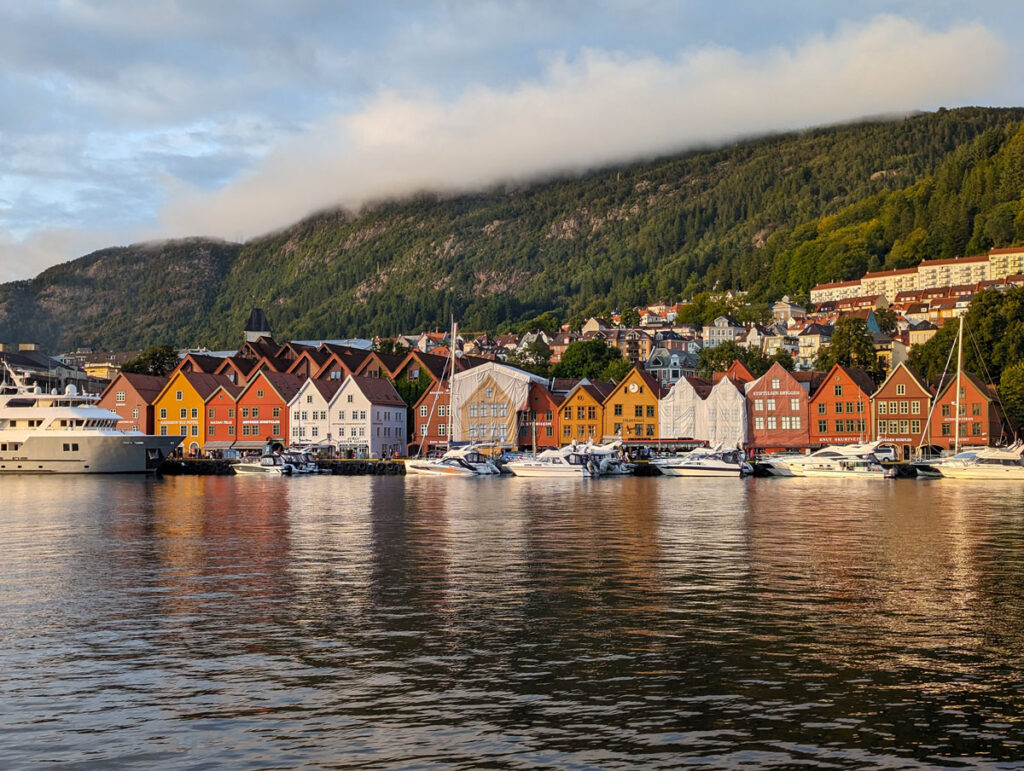
Luckily there are lots of indoor activities in Bergen, and we found plenty of things to do on a rainy day. Here are my tried-and-tested tips for things to do in Bergen when it rains.
Top things to do in Bergen when it rains
King Håkon’s Hall
On the rainiest days in Bergen, you’re going to want to spend as little time outside as possible. Starting at King Håkon’s Hall on Bergenhus, near the cruise terminal, you can visit lots of the top attractions in Bergen without needing to be outside for any significant length of time.
King Håkon’s Hall (Håkonshallen) is one of the most historically significant buildings in Norway. Constructed in the 13th century during the reign of King Håkon Håkonsson, it was a royal residence and banqueting hall, symbolising the political importance of Bergen as Norway’s then-capital.
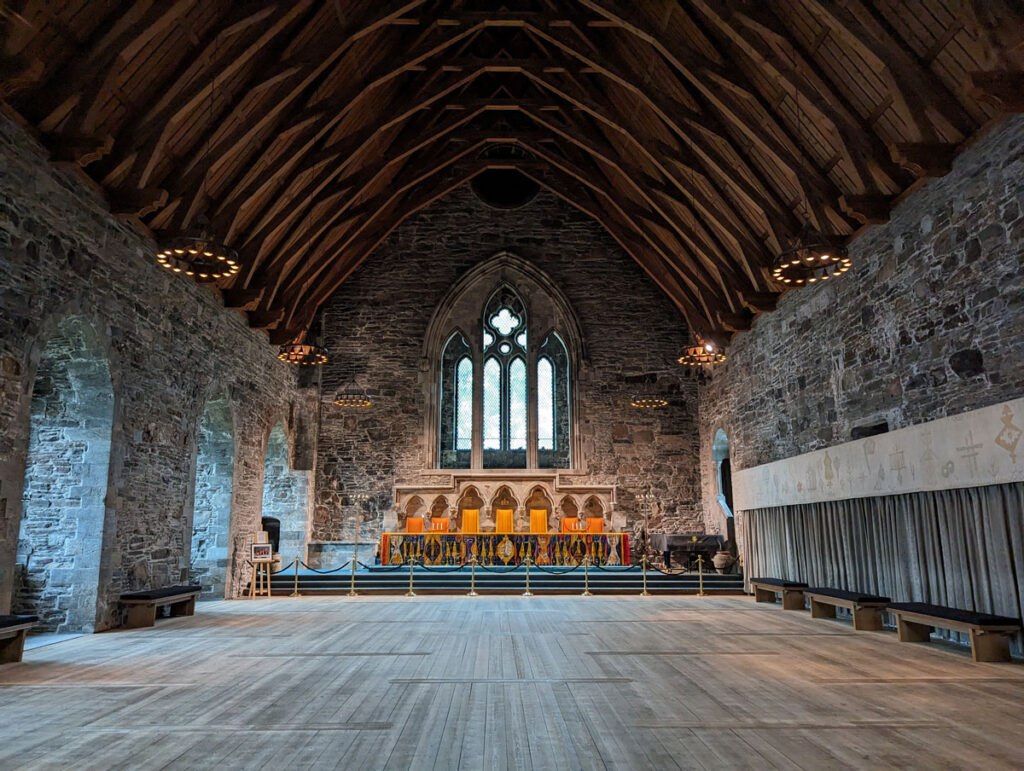
Over its seven-century existence, the hall witnessed significant events, including the crowning of Norwegian monarchs.
Unfortunately, a 1944 explosion in Bergen’s harbour left it without a roof and nearly destroyed by fire, but post-World War II restoration returned it to its medieval grandeur. Today, Håkonshallen is a national cultural monument, used for Royal occasions and other important national events.
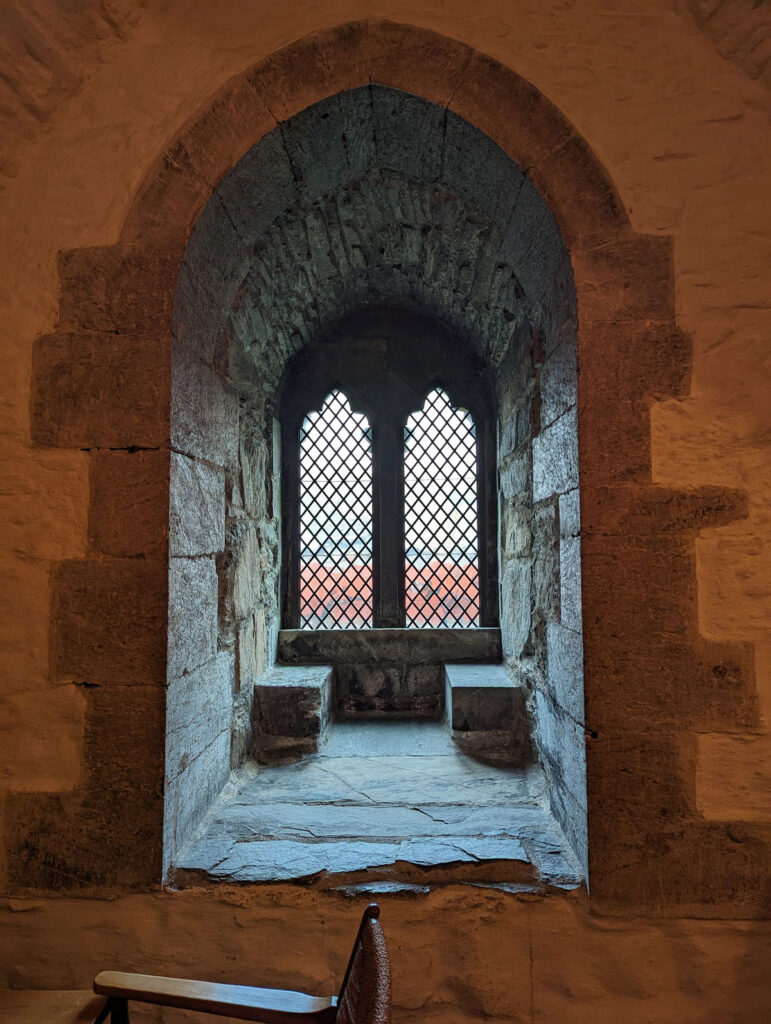
Visiting King Håkon’s Hall is a must-do when you’re visiting Bergen. The first part of the visit takes you through lots and lots of reception rooms in the old vaults, filled with mid-century tables and chairs, but when you reach the hall itself, it’s an awe-inspiring sight.
There’s very little signage around the building, but the helpful lady on the ticket desk gave us a leaflet which described what we were looking at.
Rosenkrantz Tower
The Rosenkrantz Tower is in the same Bergenhus Fortress complex as King Håkon’s Hall; you’ll barely have time to get your umbrella up before it’s time to shake it off again!
Considered Norway’s most important Renaissance structure, the Rosenkrantz Tower once housed Magnus the Lawmender, a notable Norwegian king from the 13th century. While Magnus began its construction in the 1270s, it was rebuilt several times to add extra defences. Eventually, in the 1500s, it transformed into the governor’s palace when Denmark took control of Norway.
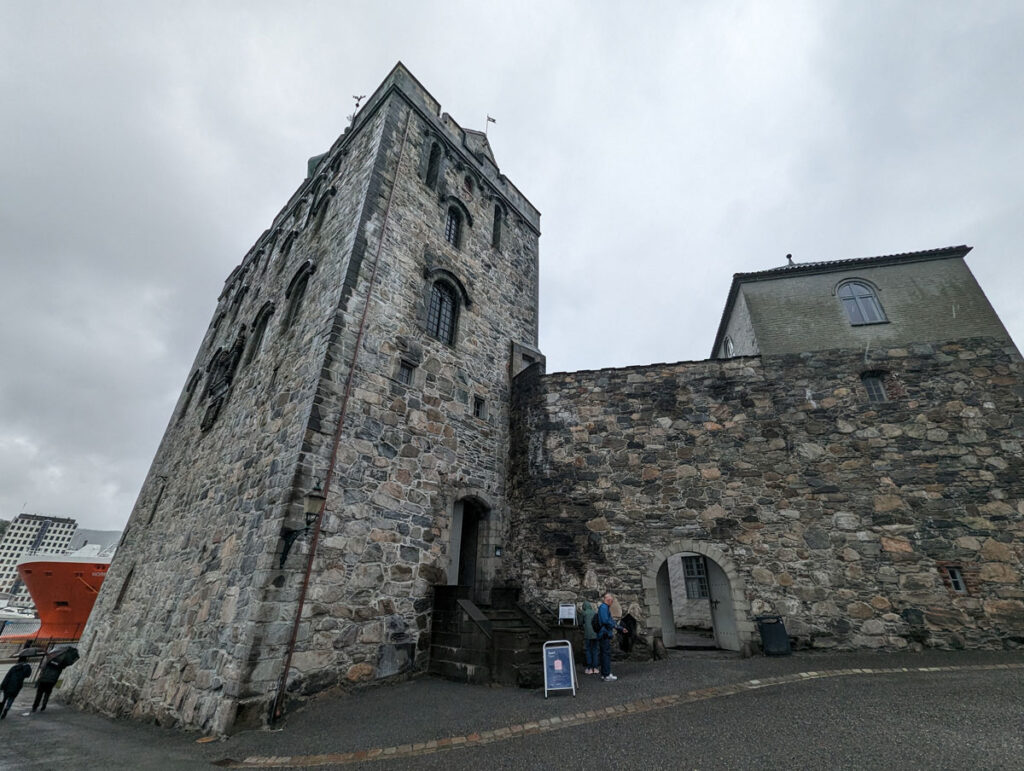
A trip to the tower is like a journey through time. Low doors and narrow staircases will take you from the basement dungeon all the way up to the cannon loft. On your way, don’t miss King Magnus Lagabøte’s bedroom and the tower’s chapel. If it’s not raining too hard, there’s a nice view of the harbour from the roof.
Bryggens Museum
The Bryggens Museum is 5 minutes’ walk from the Bergenhus Fortress complex and is one of the top things to do in Bergen when it rains. The museum is a modern building but has been imaginatively built over the remnants of the first settlements in the famous Bryggen area. Upstairs is an exhibition space (when I visited there was a photographic exhibition demonstrating the similarities between Norway and the USA).
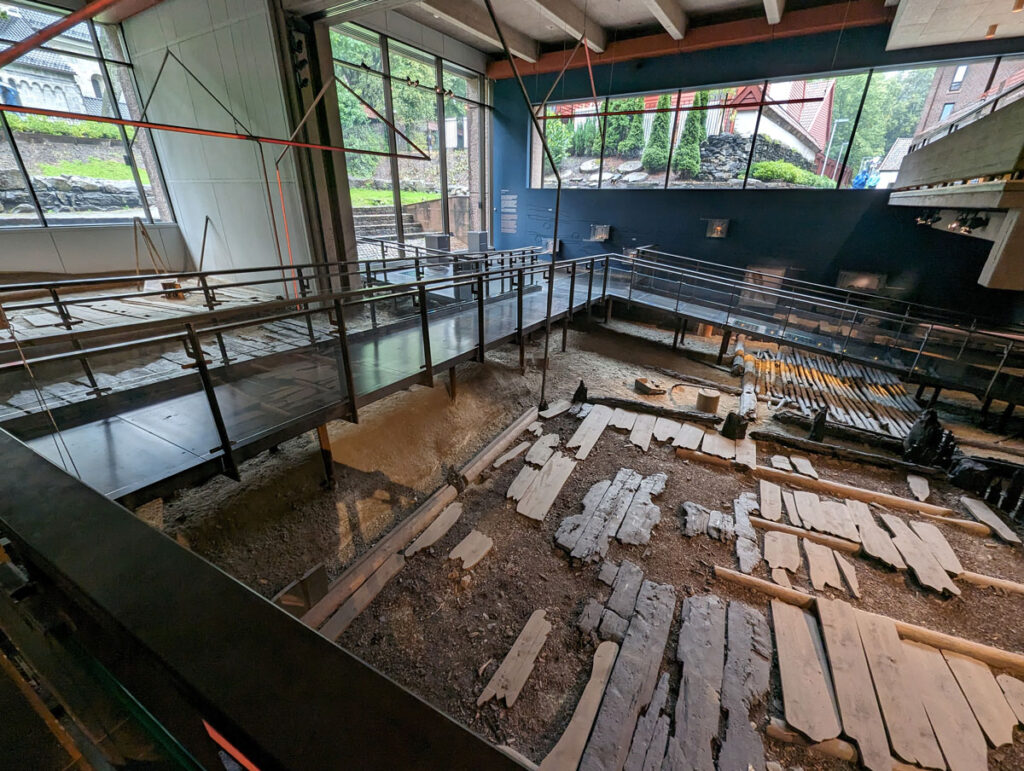
On the lower floor, you can see the floorplans of the old buildings, some of which were built over the footprints of earlier structures. There’s an interesting demonstration of the many fires that destroyed Bergen over the centuries, along with lots of artefacts that have been found during archaeological digs on and around the site.
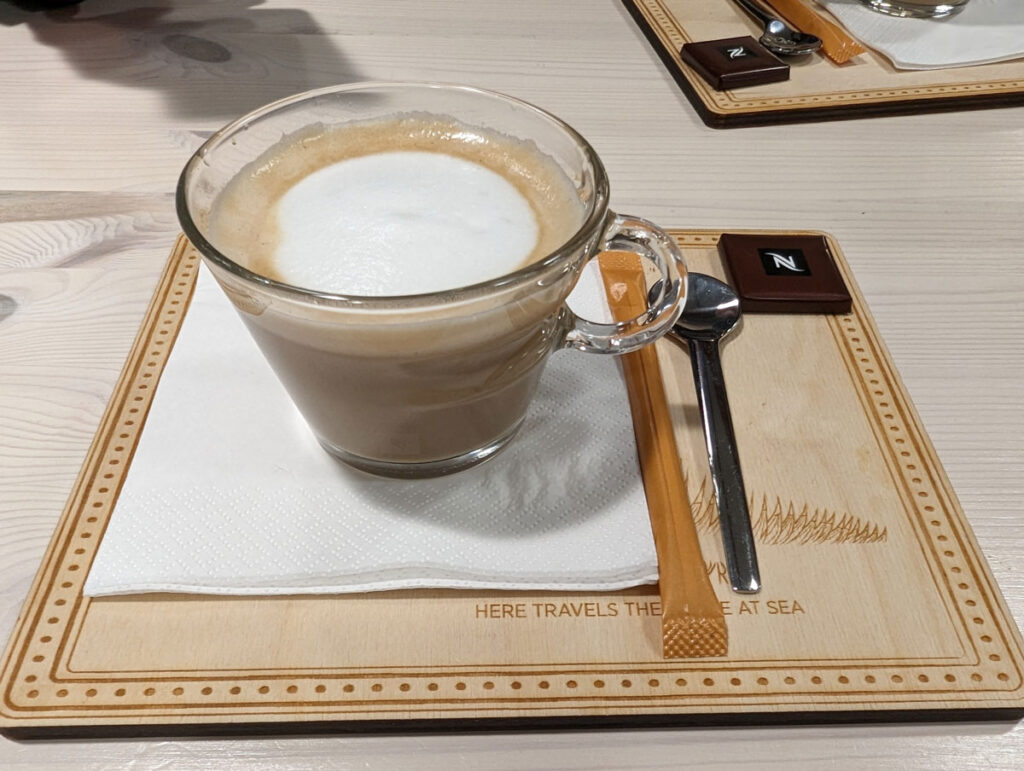
On the middle floor there’s a nice museum shop and a small cafe, where we had one of the most beautifully-presented coffees I’ve ever had.
Hanseatic Museum – Schøtstuene
The main Hanseatic Museum in Bergen is closed for reconstruction until 2027, but the Schøtstuene assembly halls are open for visitors.
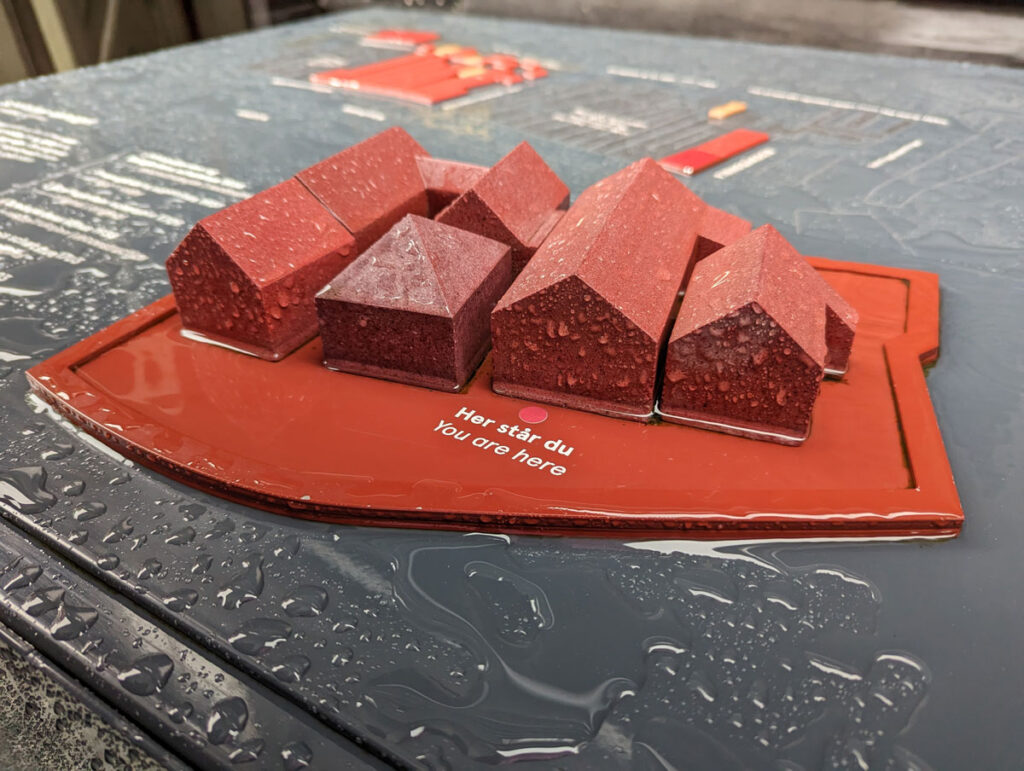
The three interconnected assembly halls were either moved here or constructed on this site just behind the Bryggens Museum. Inside, they show what it would have been like to live and work as a Hanseatic merchant or apprentice in the 14th or 15th centuries.
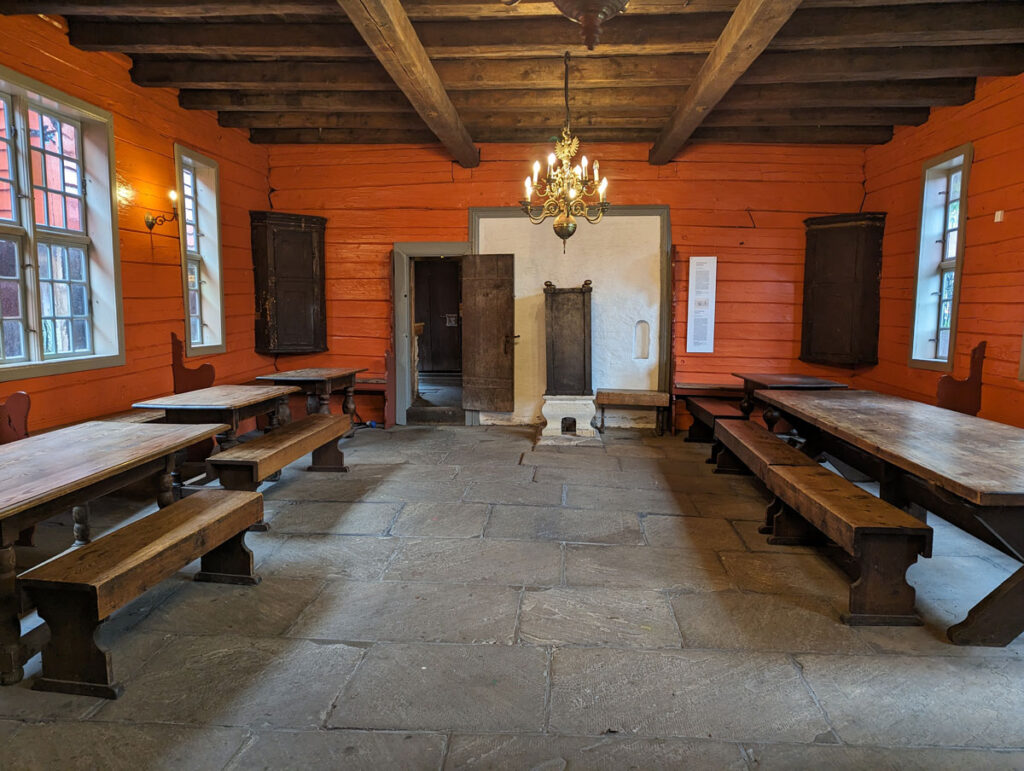
I found the Schøtstuene halls fairly interesting and it was good to get out of the rain for a while. There wasn’t an awful lot of information about the Hanseatic League inside, but I enjoyed the context about what was and what wasn’t historically accurate in the reconstructed buildings, and what the museum was doing to investigate further.
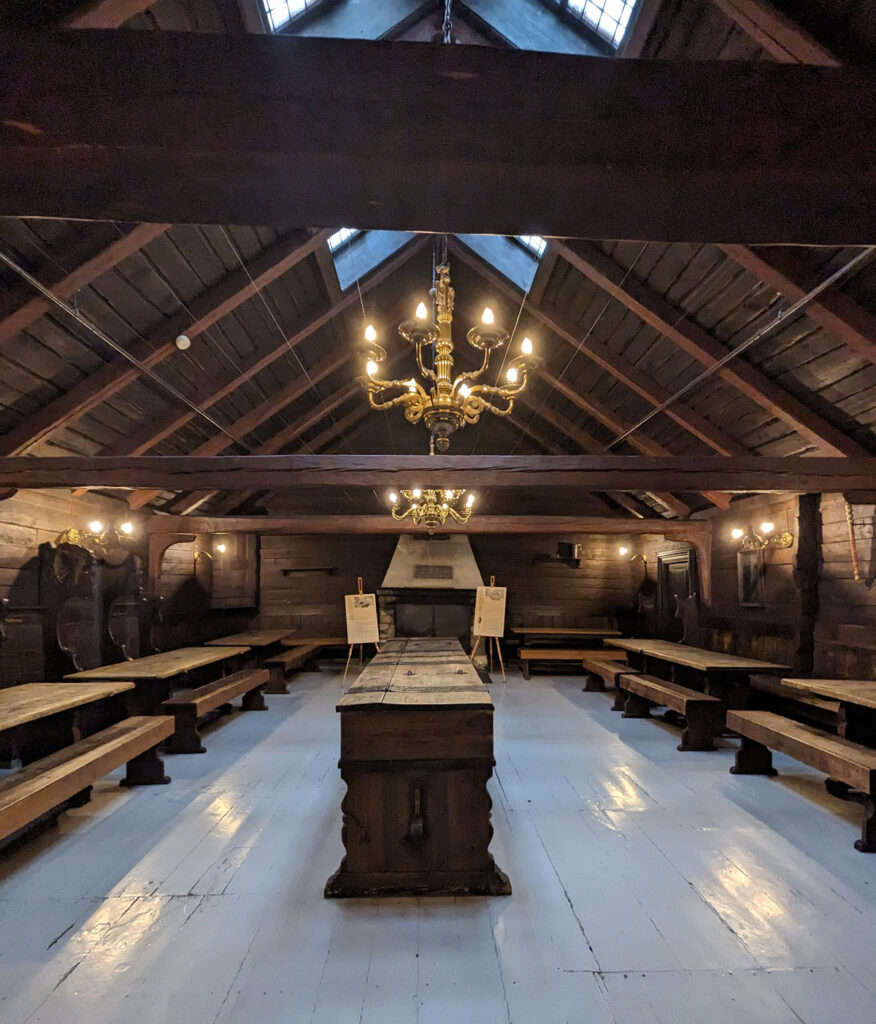
If you visit on a less rainy day in Bergen, you can take a guided tour of the Schøtstuene and Bryggen area – tours are included in your ticket.
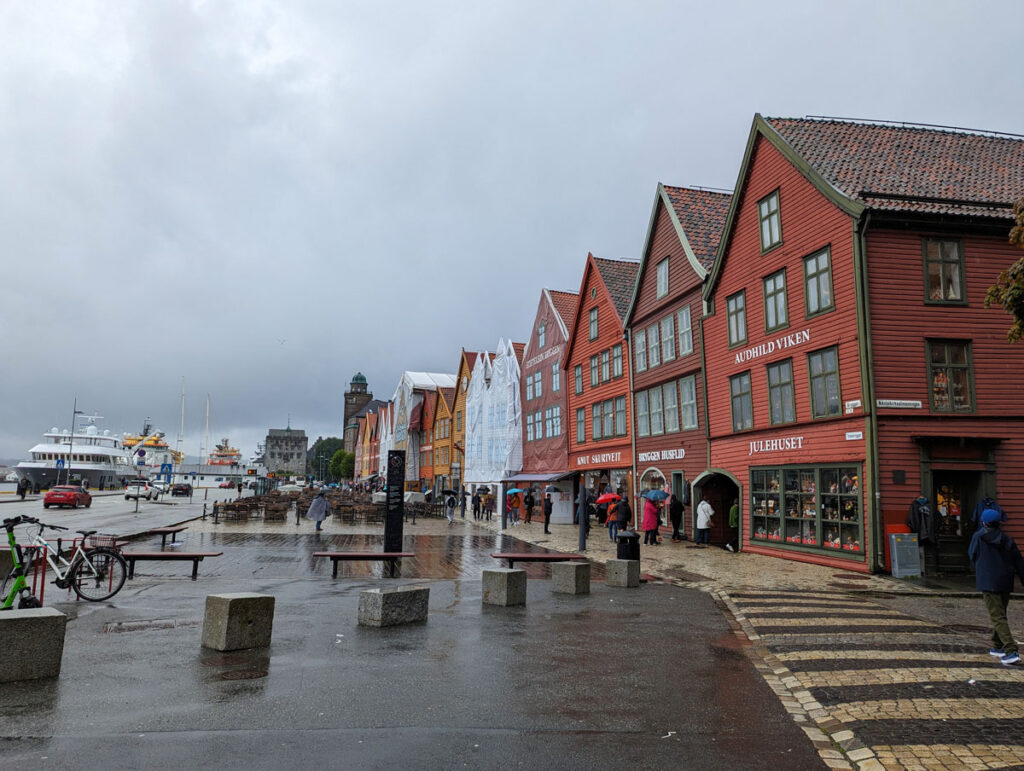
Would you like to save this?
Kode
Hopefully there’s a bit of a break in the rain at this point, because it’s time to cross town to visit another of the top things to do in Bergen when it rains – the Kode art galleries and museums.
Kode is a collection of buildings holding art galleries, installations, cafés and a bookshop, spread out along the edge of the city park, Byparken.
On a nice day, Byparken is a lovely place to spend time, with a lake, fountain, bandstand and pretty gardens, but on a rainy day in Bergen you’re more likely to come here either on your way to the railway station or to visit Kode.
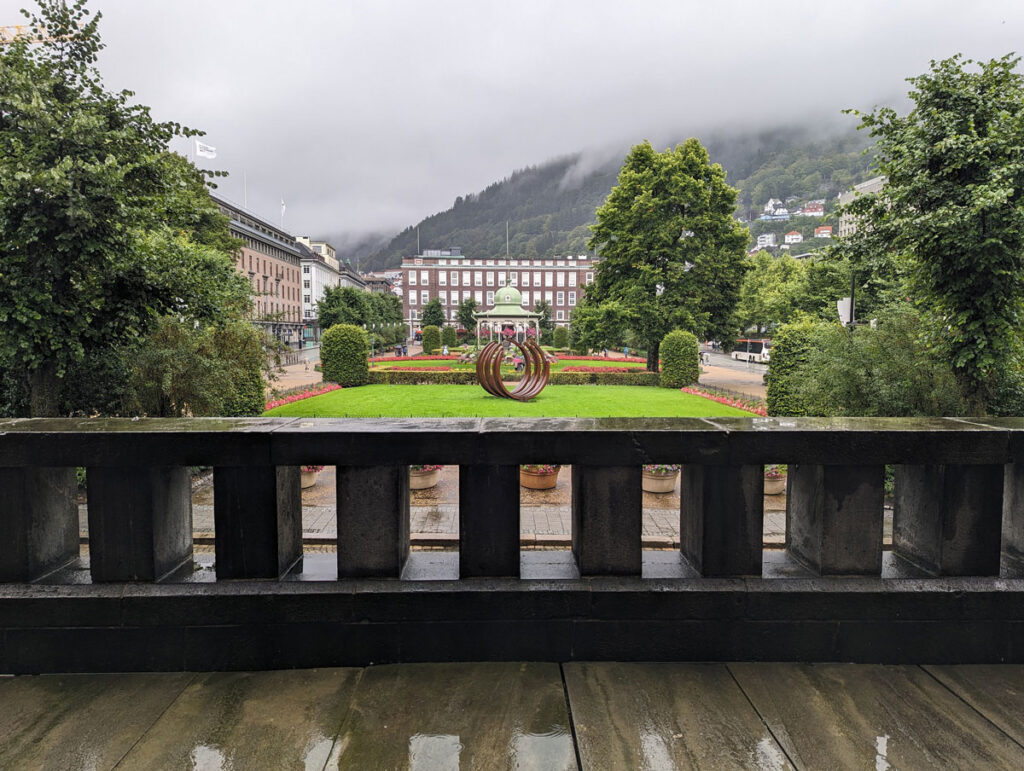
If you’re interested in art, the Kode galleries are a great way to spend a wet afternoon as you can get into all the buildings with a single ticket.
Start at the grand Permanenten building, where we saw an Ida Ekblad installation, then cross Christies Gate to visit the Stenersen building.
When we visited Bergen for the second time in August 2023, the Stenersen building was hosting an exhibition of Norwegian art collector Rolf Stenersen’s extensive collection. The collection includes works by Munch and Picasso and was sold to the city of Bergen for a tenth of its value in the early 1970s.
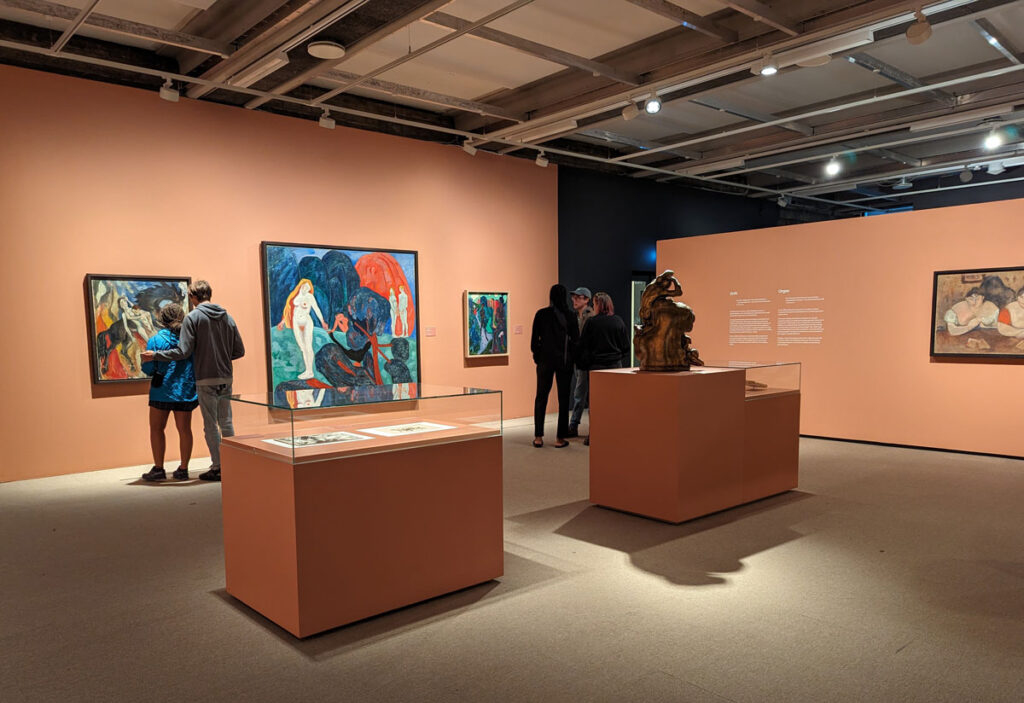
Next door to the Stenersen building you’ll find the Bergen Kunsthall which was hosting an installation when I visited. It also has a nice café/bar, Landmark.
The next building along is the Rasmus Meyer building, which holds the art collection of Bergen businessman Rasmus Meyer. Meyer was a passionate collector of Norwegian artists, including JC Dahl, Hans Gude and Harriet Backer. He also managed to accumulate one of the world’s most important collections of Edvard Munch paintings, most of which are on display here in Bergen.
The final Kode building is Lysverket, the only Kode building which wasn’t purpose built to be an art gallery. Lysverket was originally the offices for Bergen’s electricity company and has a fabulous Art Deco design.
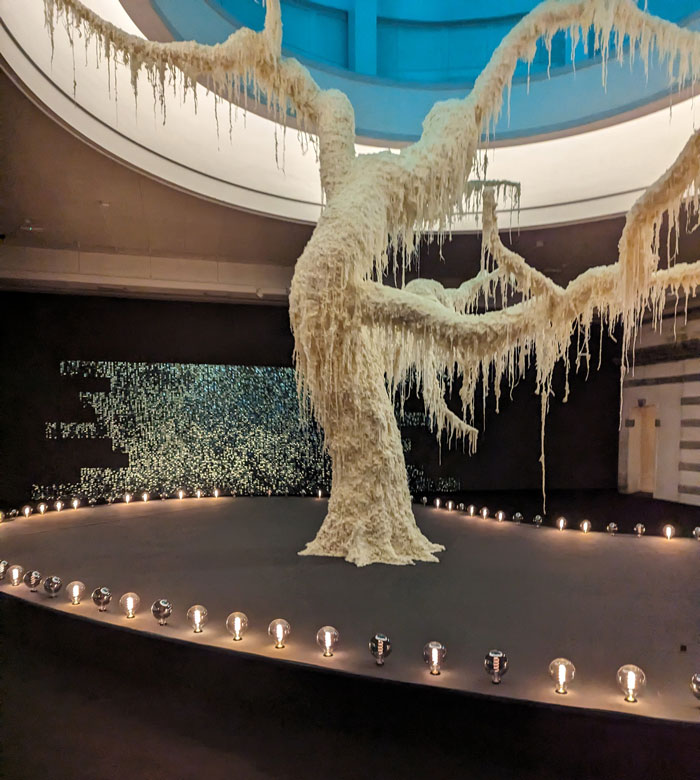
A full renovation is planned but for now Lysverket is hosting art installations like Børre Sæthre’s Last Dance in the circular tower space. Lysverket is also home to a very fancy Michelin-starred restaurant.
You can check out what’s on at the Kode buildings in central Bergen, and see more information about Kode’s other museums, including composer Edvard Grieg’s house Troldhaugen on the Kode website.
Leprosy Museum
If you’re in the mood for another museum, head 6 minutes’ walk from KODE to the Leprosy Museum. The Leprosy Museum is housed in St. Jørgen’s Hospital in Bergen and offers a solemn yet insightful journey into the history of leprosy.
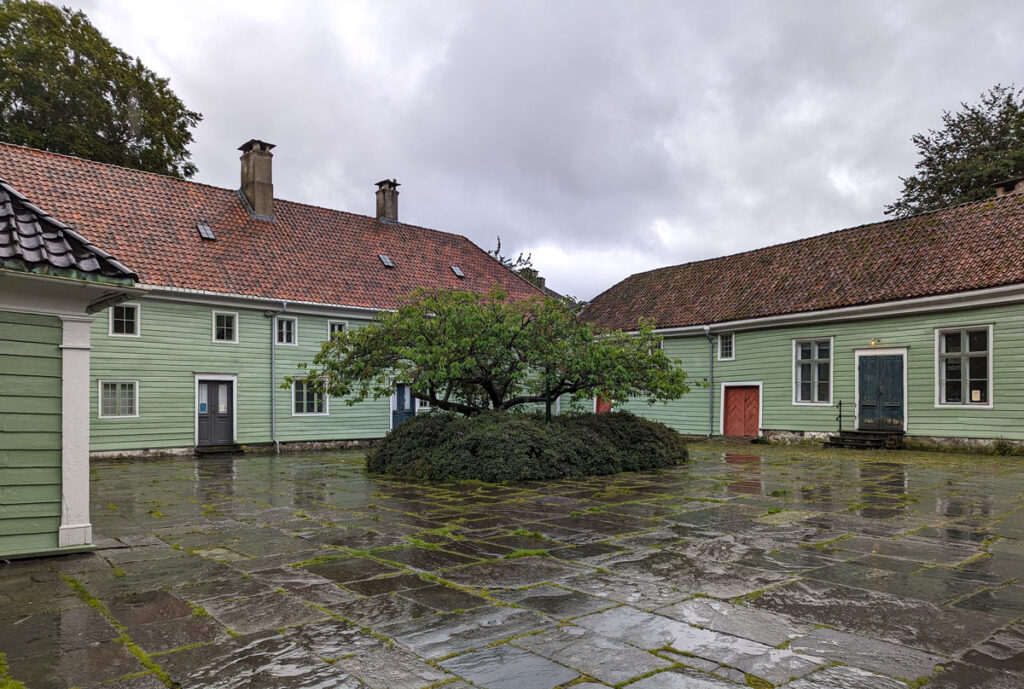
This museum, set in one of the oldest surviving leprosy hospitals in Europe, traces the struggles and stories associated with this disease. It’s also one of the few museums in Bergen that’s open on Mondays, although it is closed during winter.
Visitors are transported back in time, able to witness first-hand the living conditions and treatment methods of patients from centuries ago. The museum aims to foster understanding and empathy, showcasing a significant, yet often overlooked chapter in medical history and Norway’s efforts to combat leprosy.
Bergen University Museum
If you’re not into art, then the Bergen University Museum and the nearby Maritime Museum are good options for things to do in Bergen when it rains. The Bergen Aquarium is also nearby.
Bergen University Museum focuses on Norway’s natural and cultural history. Part of the University of Bergen, the Bergen University Museum has exhibits ranging from geological specimens and ancient archaeological artefacts to zoological displays.
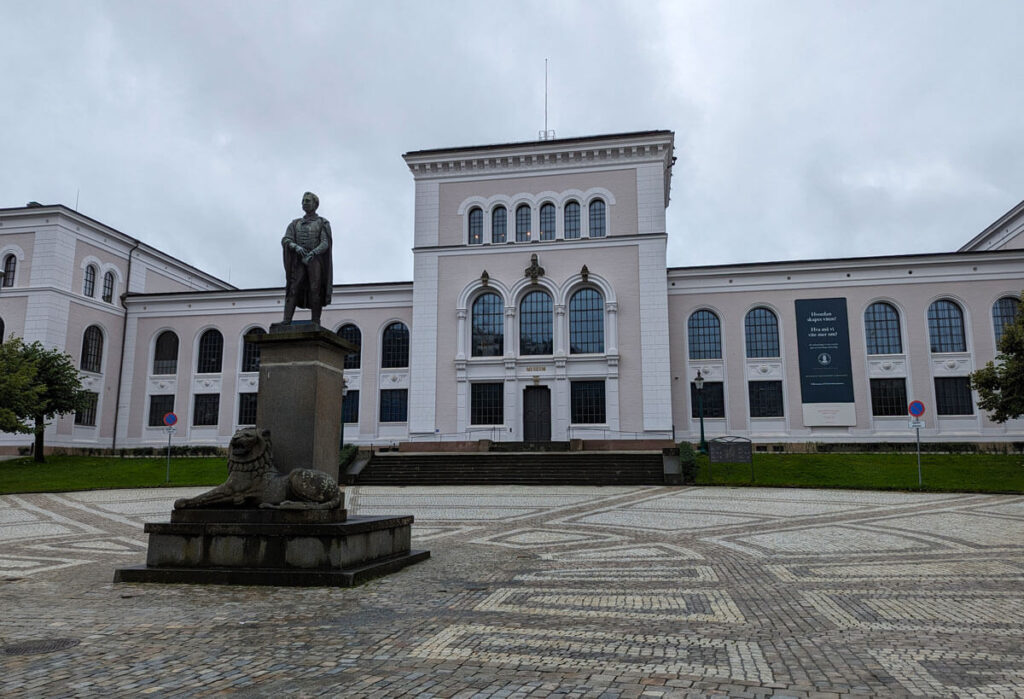
For anyone keen on a deep dive into nature and history, this museum is a Bergen highlight.
Maritime Museum
The Maritime Museum celebrates Bergen as a port city and explains Norway’s rich maritime legacy, from its Viking origins to contemporary sea explorations.
Exhibits at the Maritime Museum include intricately crafted ship models, marine artefacts, and interactive displays that tell tales of naval warfare, trade, and navigation.
Amundsen bar
By now you must be all museum-ed out, and possibly still a bit damp, so let’s head somewhere cosy to warm up. The Amundsen bar in the Grand Hotel Terminus next to Bergen’s railway station is a gorgeous, wood-panelled room with 6ft ceilings, cosy sofas and armchairs and a roaring fire. Add in one of Norway’s best whisky selections and you’ve got one of the best things to do in Bergen when it rains.
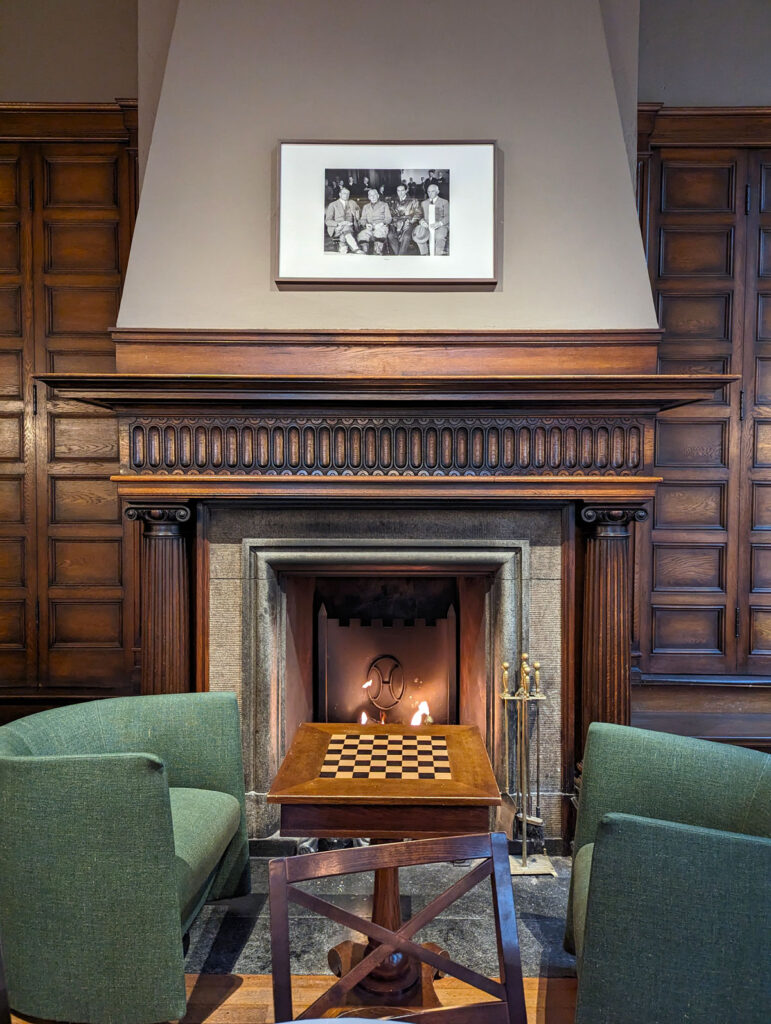
This isn’t any old hotel bar though; the inviting surroundings of the Amundsen bar are historically significant too. Roald Amundsen, who the bar is named after, was a prominent Norwegian explorer who is best known for his polar expeditions. He was the first person to reach the South Pole in 1911 and led the first successful expedition to traverse the Northwest Passage in the Arctic.
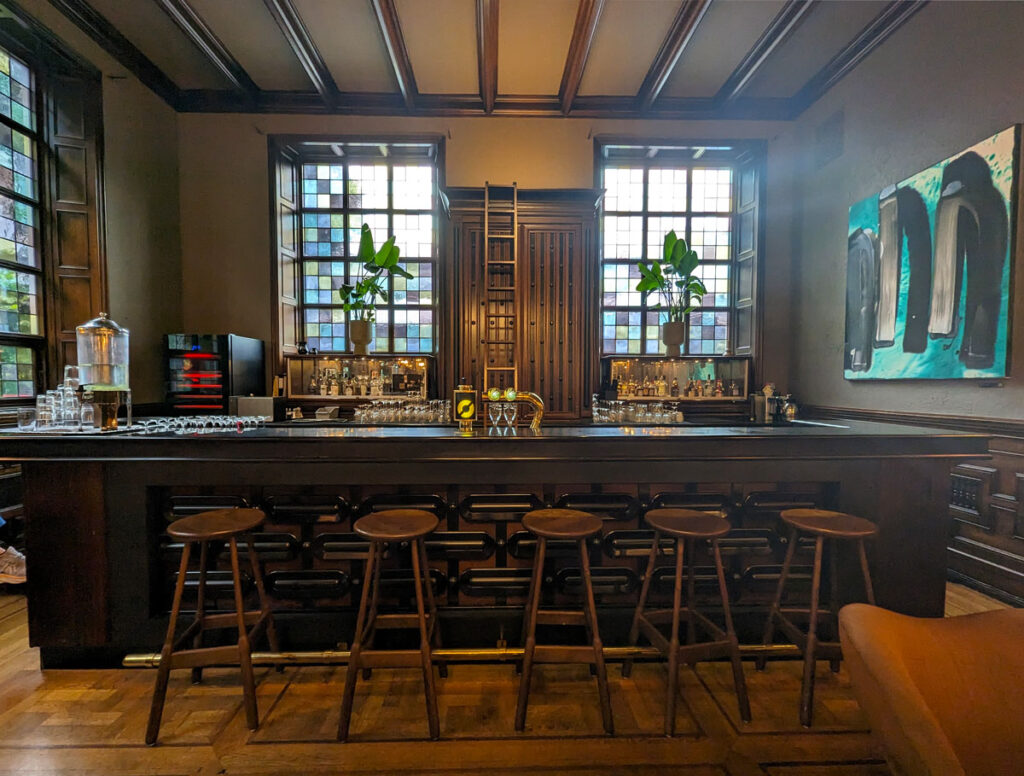
In June 1928, the Italian explorer Nobile disappeared on an Arctic exhibition. Amundsen, together with a team of volunteers, planned to set out to rescue the Italian team, and held a press conference in the Grand Hotel Terminus’s whisky bar. A day later, Amundsen vanished, never to be seen again.
Take a fjord tour
If none of these suggestions for things to do in Bergen when it rains appeal, then how about a fjord tour? This isn’t quite as crazy as it sounds; the weather is often better inland than it is in Bergen, and fjord cruise boats like the Rødne cruise that I took to Mostraumen make sure that there are enough inside seats for everyone.
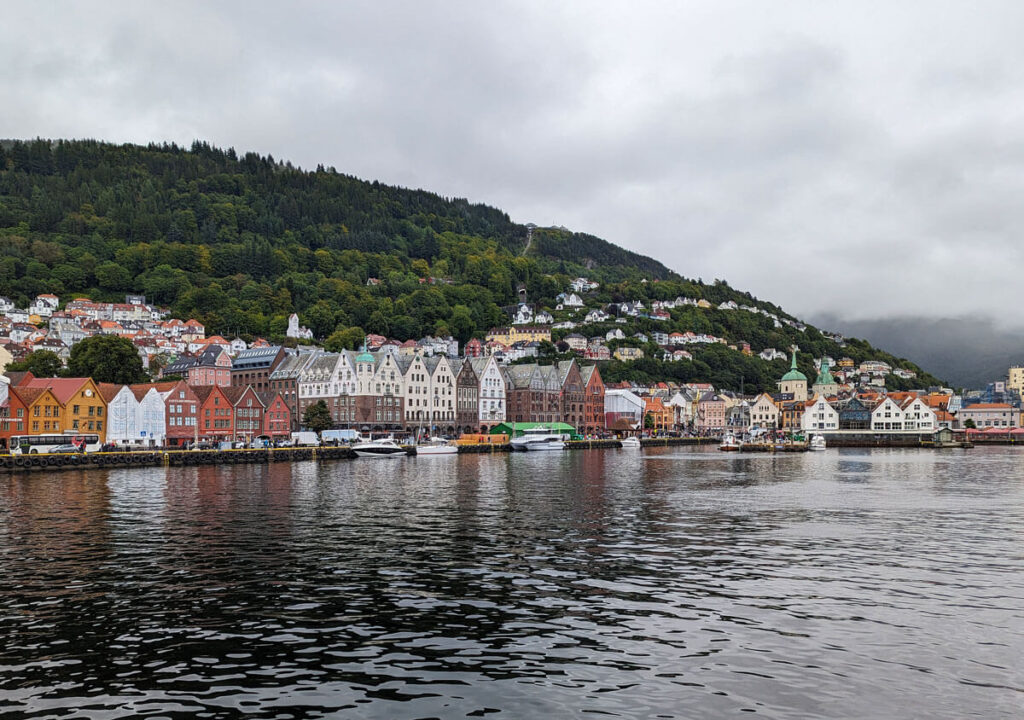
If you’re limited for time in Bergen then the Mostraumen fjord tour is a great choice. The cruise takes 3 hours to travel out to the picturesque Mostraumen Strait and Bergsaafossen waterfall, passing by Bryggen, the Nordhordland Bridge and the pretty church at Hamre.
Read my Mostraumen fjord cruise review
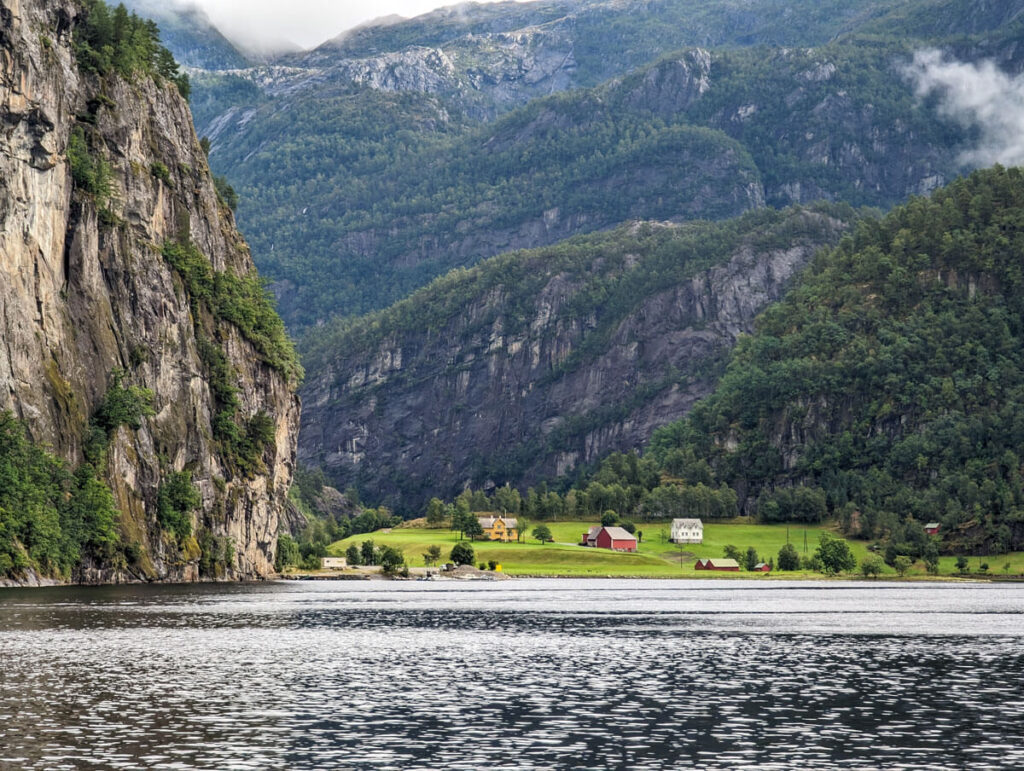
I took the Mostraumen tour on my last day in Bergen and while we left Bergen looking pretty grey and damp, it dried up a bit when we got to the Osterfjord, and we even had a little bit of sun once we passed the narrow strait around Paddøy island.
It did start raining again on the way back, but there were definitely enough seats inside for everyone who wanted them.
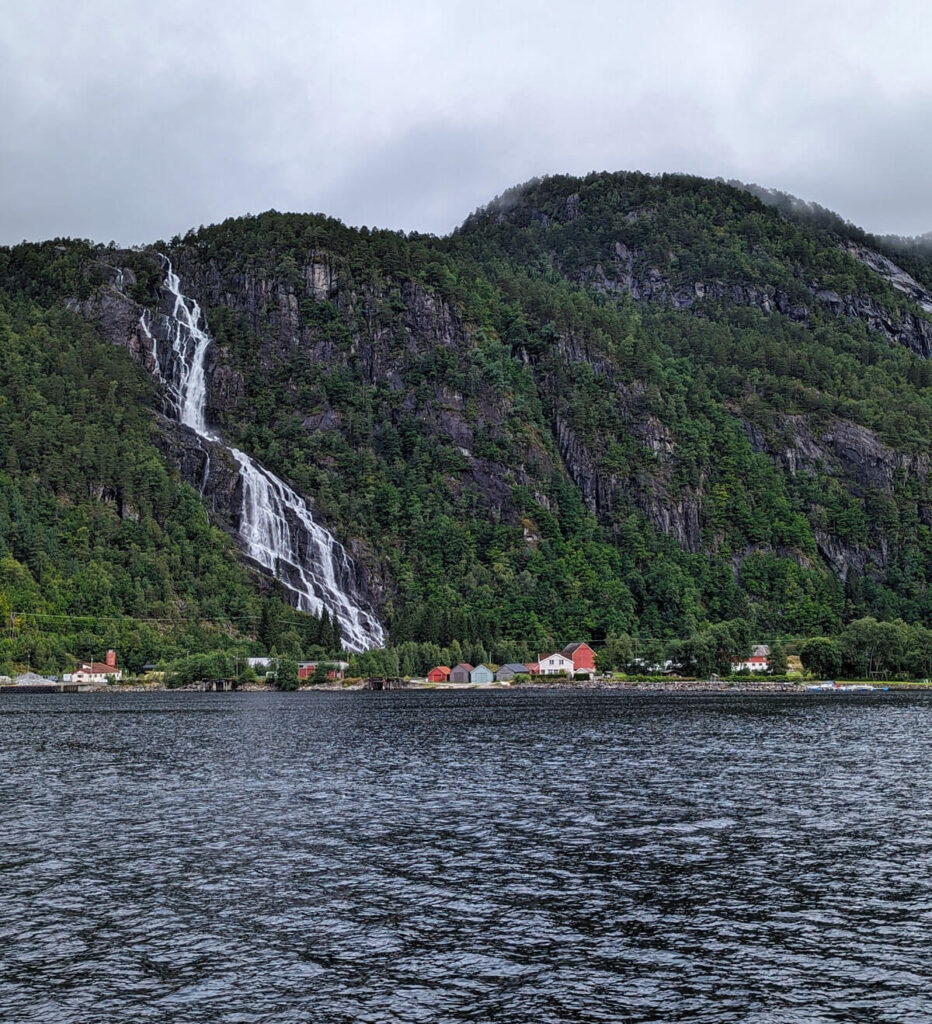
The Norway in a Nutshell tour from Bergen is another great option for things to do in Bergen when it rains. This self-guided tour is one of the most popular day trips from Bergen. You’ll leave Bergen by train and take a bus through beautiful countryside, a boat through the UNESCO-listed Nærøyfjord and Aurlandsfjord to Flåm, then take a trip on the Flåm Railway, before taking another train back to Bergen.
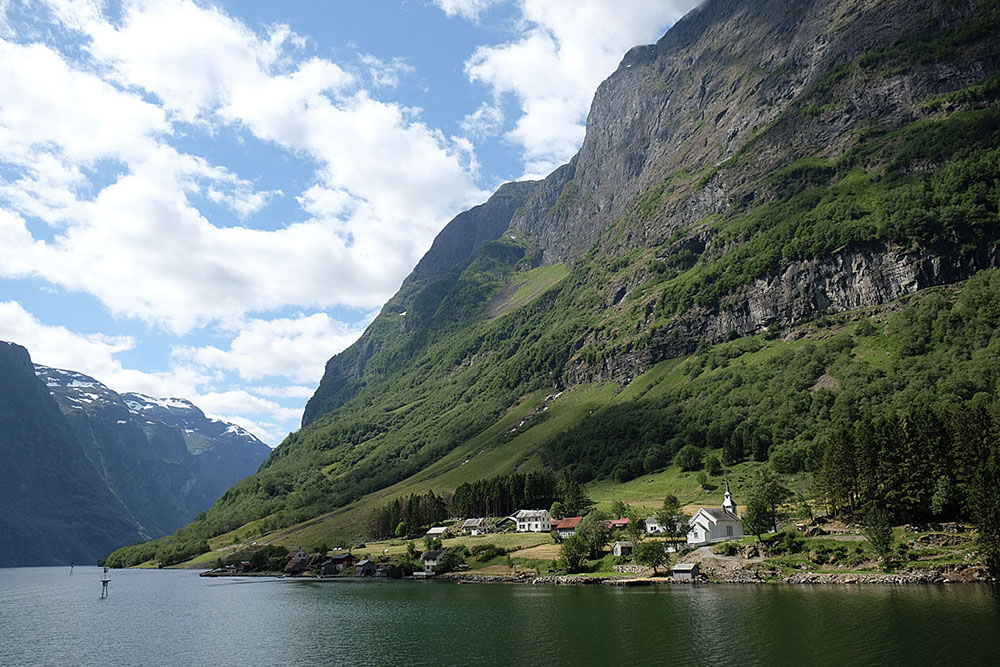
I took Norway in a Nutshell from Bergen to Oslo in June for my 40th birthday and we had the same experience – it was grey and misty when we left Bergen, a little brighter in Voss and by the time we reached Flåm it was a beautiful sunny day.
VilVite – the perfect rainy day activity in Bergen with kids
VilVite, the Bergen science centre, is one of the best things to do in Bergen when it rains, especially if you’re travelling with children who might not appreciate trekking around art galleries.
VilVite is an interactive science centre that encourages visitors, especially children, to engage with science and technology through hands-on experiments and experiences.
VilVite is located just outside Bergen city centre, near the Florida Bybanen tram stop.
Two things you (probably) shouldn’t do in the rain
While seeing the beautiful views from the top of the Fløyen or Ulriken mountains is an unforgettable experience, it isn’t always the best rainy day activity in Bergen. Because you’re up high, there’s a good chance that if it’s raining, you’ll be inside the cloud and won’t be able to see anything!
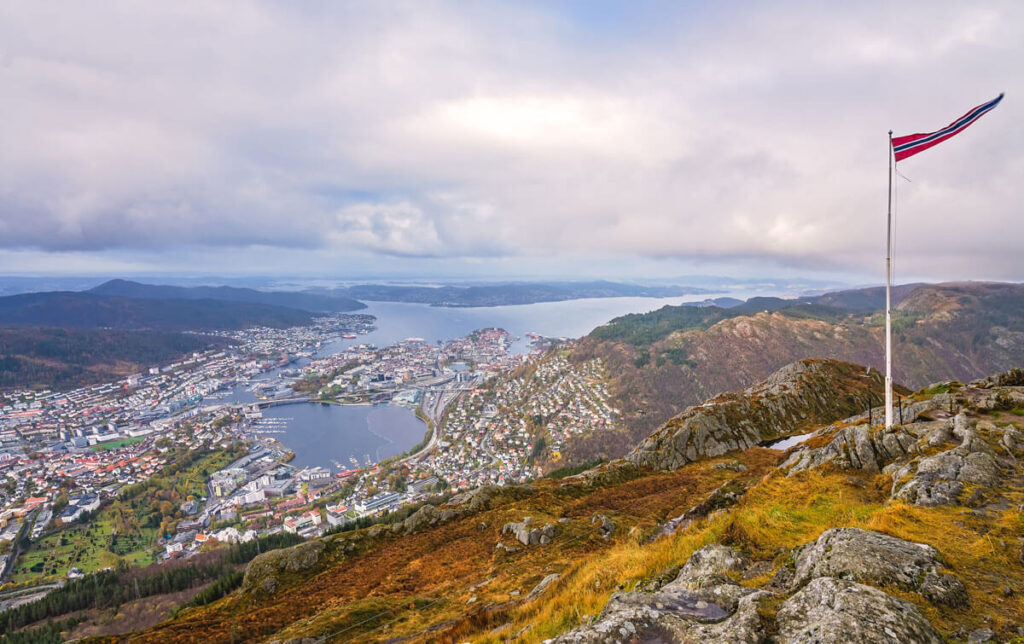
There is a very quick way to see if it’s going to be worth taking the Fløibanen funicular up Fløyen or the Ulriken643 cable car – just look up! If you can see the top of the mountain, then it’s ok to go. If not, then visibility probably isn’t going to be great. Both Fløyen and Ulriken have webcams which you can check out to see the view from the top.
It’s worth bearing in mind that Fløyen is much lower than Ulriken, so if the rain isn’t too heavy then going up Fløyen might be a good activity. On my last trip to Bergen the Ulriken webcam was showing thick cloud, while the Fløyen webcam was nice and clear.
I hope you’ve found these ideas for things to do in Bergen when it rains useful – wishing you sunny skies for your trip to Bergen!
Pin things to do in Bergen when it rains for later!
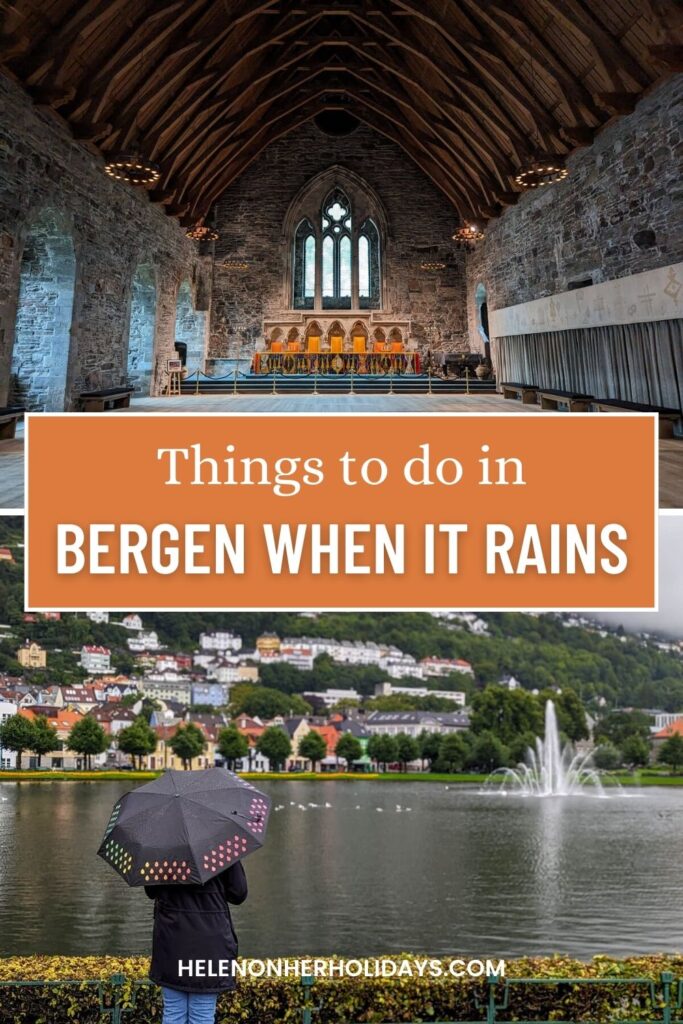
Read more about Norway:
- See the best of Norway with the Norway in a Nutshell self-guided tour from Bergen to Oslo
- See one of the most beautiful places in Norway on a Bergen to Mostraumen fjord cruise
- Things to do in Oslo

